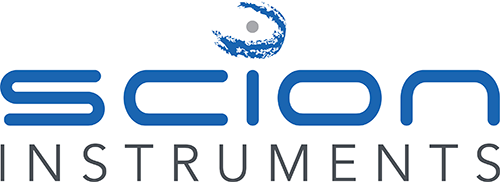Sample preparation GC-MS
Sample preparation GC-MS
Gas chromatography combined with Mass spectrometry (GC-MS) is a powerful analytical technique used to identify and quantify compounds in a sample. Small and more volatile compounds are usually tested on a GC-MS system such as pesticides, polychlorinated biphenyls (PCBs) and volatile organic compounds (VOCs).
The sample is injected in the GC where the sample is vaporized. It is then separated in the column based on the compounds boiling points and chemical interaction with the stationary phase.
After being separated on the column, the analytes will enter the MS were the compounds are ionized and measured by their mass to charge ratio (m/z). This provides detailed molecular information.
Sample preparation
Samples that are to be analysed by GC-MS often contain dirty compounds that sometimes require ‘specialist’ sample preparation as detailed below:
1. Collect the samples in clean glass containers to avoid contamination.
2. Choose the correct solvent for your sample. Use volatile organic solvents such as iso-octane, dichloromethane or hexane, these solvents are clear and colourless which is recommended. Avoid using water, non-volatile solvents, strong acids and strong bases.
3. Ensure that the samples are free from sediments or particles by using clean-up procedures, such as centrifuging and filtering.
4. If necessary, chemical modifying your sample can help to make it more volatile and suitable for GC-MS. This is particularly helpful for analysis of amino acids, fatty acids or steroids.
5. When the sample is ready for injection transfer the sample into glass sample vials. Use an insert in the vial if you only have 1 or 0.5 mL of sample.
Solid phase Extraction (SPE)
Is a technique to concentrate and purify analytes from complex matrixes. The sample is passed through a cartridge containing a sorbent material. Analytes adhere to the sorbent while the impurities are washed away. The analytes are then eluted using a solvent, ready for GC-MS analysis. See our tech note for more information about SPE.
Liquid-liquid extraction (LLE)
Is a technique to separate analytes based on their solubility in different solvents. The sample is mixed with two immiscible solvents, one typically an organic solvent. After mixing thoroughly two layers will be visible with the analytes dissolved in the organic layer. The organic layer will be separated from the aqueous layer. The organic layer is collected, blown down with an inert gas and injected in the GC-MS. See our tech note for more information about LLE.
Derivatization
For chemically modifying a compound you can choose a technique such as derivatization which can convert non-volatile compounds into volatile derivatives. For example converting carboxylic acid into its methyl esters to improve volatility. The chemical reaction will be as followed:
COOH + CH3OH → COOCH3 + H2O
In this reaction the hydroxyl group (-OH) of the carboxylic acid is replaced by a methoxy group (-OCH3), forming the methyl ester. The compound becomes more volatile and stable making it suitable for injecting into the GC-MS. See our tech note for more information about Derivatization.
Headspace
Is a technique used to analyse volatile substances in a sample. This happens without direct contact between the sample and instrument. It’s great for isolating and analysing the volatile components of a sample without interfering with non-volatile components.
The liquid or solid sample is placed in a sealed vial. When heated, the volatile compounds vaporize and collect in the empty space (headspace) above the sample. When directly sampling from the headspace of the vial and injecting in the GC it is known as ‘Static Headspace’.
When compounds are concentrated on a sorbent trap before analysis this is known as ‘Dynamic Headspace’.
Download Technical Note – Sample preparation GC-MS v1
